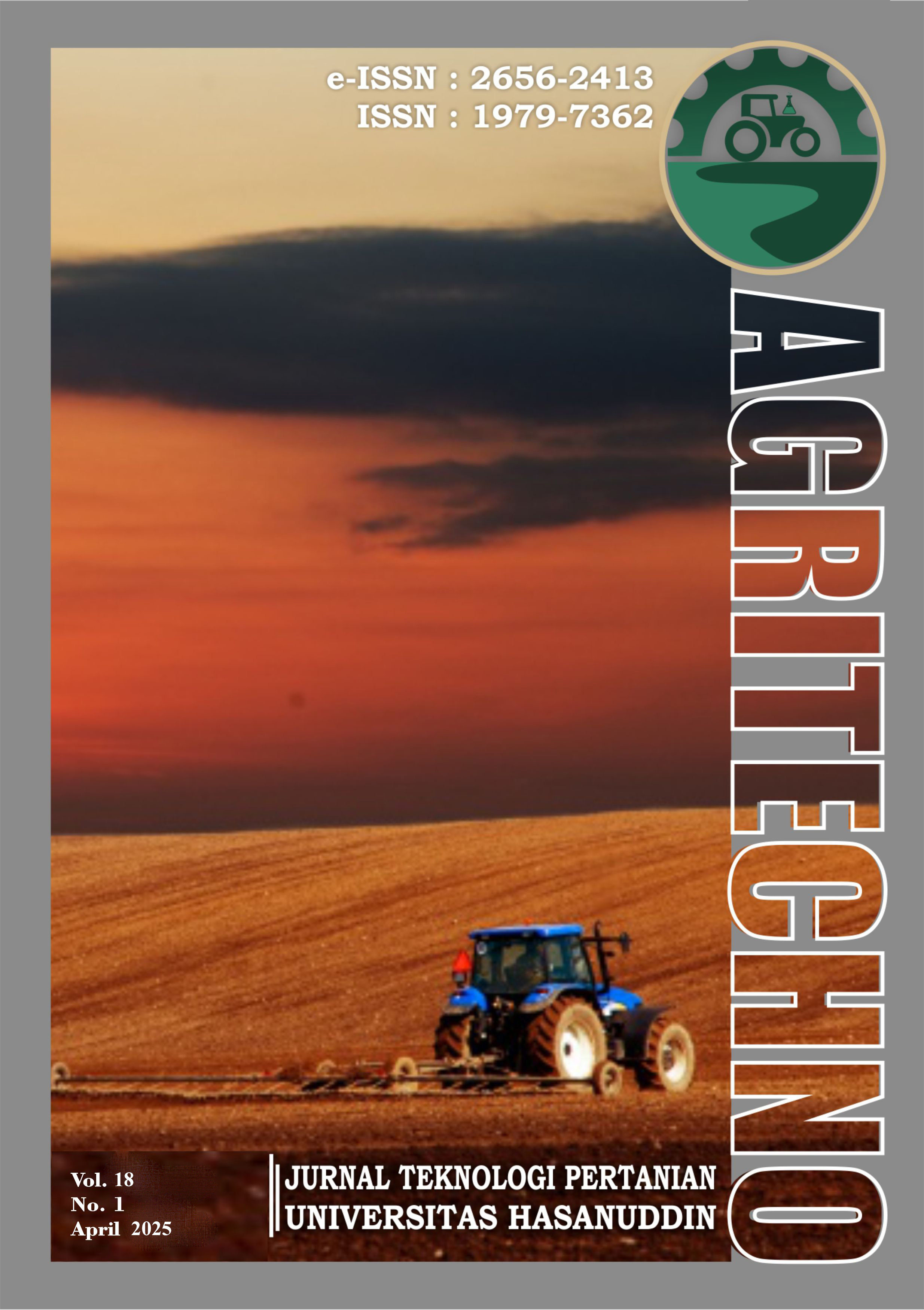PENENTUAN ASPEK UTAMA DALAM MENDESAIN KEMASAN TABARO DANGE KHAS LUWU MENGGUNAKAN ANALYTICAL HIERARCHY PROCESS (AHP)
##plugins.themes.academic_pro.article.main##
Abstract
Dange is a traditional food from Luwu that is commonly consumed by the local community as a complementary dish, often served with kapurung, pacco’, or lawak. Made from sago, dange can serve as a rice substitute, providing a satisfying meal due to the high starch content in sago. Additionally, dange can be a suitable option for a low-glycemic diet, given its low glycemic index, which offers health benefits compared to rice. Despite its benefits, dange is not highly popular in the market. This is influenced by several factors, one of which is the packaging used for dange. Cooked and cooled dange is typically packaged in small, thin plastic bags that are unappealing both in appearance and hygiene. Therefore, this study was conducted to propose an alternative packaging design for dange, with the expectation that improved packaging can enhance its market appeal. Several important aspects need to be considered when designing food packaging, including visual appeal, safety/protective capability, product pricing, environmental friendliness, and ease of use. The dominance of these aspects may vary depending on consumer needs and purchasing power, available capital, the primary purpose of the packaging, and the type of product being packaged. Thus, it is necessary to determine the most critical aspect to focus on in designing packaging that better meets the target requirements. One method that can be used to determine this key aspect is the Analytical Hierarchy Process (AHP). This method allows for more objective decision-making by utilizing the Expert Choice software to analyze and score the evaluations provided by expert respondents. Subsequently, the key aspect identified through the AHP method will be compared with survei data collected from 100 respondents/consumers of tabaro dange products. The AHP results indicate that the safety and protective capability of packaging are the primary aspects to consider in designing packaging for the Luwu specialty tabaro dange, with an inconsistency value of 0.08. This finding aligns with survei data from consumers, where 69% identified product quality as the main factor influencing their purchasing decisions. Notably, product quality is heavily influenced by the safety and protective properties of its packaging
##plugins.themes.academic_pro.article.details##
References
- Al-Zibaree, Havraz Khedhir Younis, and Mine Konur. 2023. “Fuzzy Analytic Hierarchal Process for Sustainable Public Transport System.” Journal of Operations Intelligence 1(1): 1–10.
- BPOM RI. 2011. “Peraturan Badan Pengawas Obat Dan Makanan Republik Indonesia Nomor HK.03.1.23.07.11.6664 Tahun 2011 Tentang Pengawasan Kemasan Pangan.” Badan Pengawas Obat dan Makanan 53: 1689–99.
- Frisilia, Jenita, Diaz Capriani, and Arina Rizky Fauziah. 2024. “Analisis Proksimat Tabaro Dange Berbasis Pangan Lokal Sebagai Alternatif Makanan Darurat Proximate Analysis of Local Food-Based Tabaro Dange as an Emergency Food Alternative.” Jurnal Kolaboratif Sains 7(1): 603–8.
- Haliza. 2021. “Sagu Sebagai Makanan Pokok Fungsional.” : 1–6. https://anj-group.com/id/sago-harvesting-and-processing-1/download/17/Sago Health Benefit Brochure_ID (6 pages)_vR060v20210122112848.pdf.
- Horowitz, Naomi, Jessica Frago, and Dongyan Mu. 2018. “Life Cycle Assessment of Bottled Water: A Case Study of Green2O Products.” Waste Management 76: 734–43. https://doi.org/10.1016/j.wasman.2018.02.043.
- Iingrid, Suryanti Surono, and Waspodo Agus, Sudibyo Priyo. 2016. Pengantar Keamanan Pangan – Untuk Industri Pangan. Yogyakarta: Deepublish.
- Irwan, Halid; Rosmina; Yasmin. 2023. “Faktor-Faktor Yang Memotivasi Masyarakat Dalam Factors That Motivate the Public To Consume Processed Products Made From Sago Raw.” Jurnal Tabaro Agriculture Science 7(2): 11–21.
- Julyaningsih, A.H, Ibnu Mansyur Hamdani, and Irhamni Nuhardin. 2024. Sagu Sebagai Edible-Plastic Berbasis Untuk Kemasan Makanan. I. Palopo: Dewantara Press. https://dewantarapress.my.id/pub/catalog/book/36.
- Julyaningsih, A.Hermina, Ibnu Mansyur Hamdani, and Thitin Binalopa. 2025. “Development of Sago-Based Edible Plastic as Primary Packaging for Instant Food Products Development of Sago-Based Edible Plastic as Primary Packaging for Instant Food Products.” IOP Conference Series: Earth and Environmental Science: 0–9.
- Khaira, Ashish, and R. K. Dwivedi. 2018. “A State of the Art Review of Analytical Hierarchy Process.” Materials Today: Proceedings 5(2): 4029–35. https://doi.org/10.1016/j.matpr.2017.11.663.
- Klimchuk, Marianne Rosner, and Sandra Krasovec. 2018. 53 Packaging Packaging Design Successful Product Branding from Concept to Shelf.
- Lam, Chor Man et al. 2018. “Life-Cycle Cost-Benefit Analysis on Sustainable Food Waste Management: The Case of Hong Kong International Airport.” Journal of Cleaner Production 187: 751–62. https://doi.org/10.1016/j.jclepro.2018.03.160.
- Lisarini, Endah et al. 2020. “Persepsikonsumenterhadap Kemasanberas.” Agroscience Vol. 10 No.1 10(1): 1–11.
- Marimuthu, Prashanthi Devi, Rajakumar Sundaram, Aravind Jeyaseelan, and Thamaraiselvi Kaliannan. 2021. Bioremediation and Green Technologies. http://link.springer.com/10.1007/978-3-030-64122-1.
- Masamba, Mark. 2024. “Impact of Food Packaging Materials on the Shelf-Life and Quality of Packaged Food Products.” Journal of Food Sciences 5(2): 15–28.
- Nuryanti, Dewi Marwati. 2022. “Dinamika Pengetahuan, Realisasi Kebijakan Dan Skenario Pengembangan Teknopark Sagu Palopo.” Disertasi: 160 Halaman.
- Permatasari, Layli Yulia, Achmad Firman, and Anita Fitriani. 2022. “Brand Equity Analysis of Uht Milk Product Tetra Pack 200 Ml in Yogya Departement Store Cimanggu Bogor City.” Jurnal Ilmu Ternak Universitas Padjadjaran 22(1): 43.
- Sarma, Hemen et al. 2022. “Microplastics in Marine and Aquatic Habitats: Sources, Impact, and Sustainable Remediation Approaches.” Environmental Sustainability 5(1): 39–49. https://doi.org/10.1007/s42398-022-00219-8.





